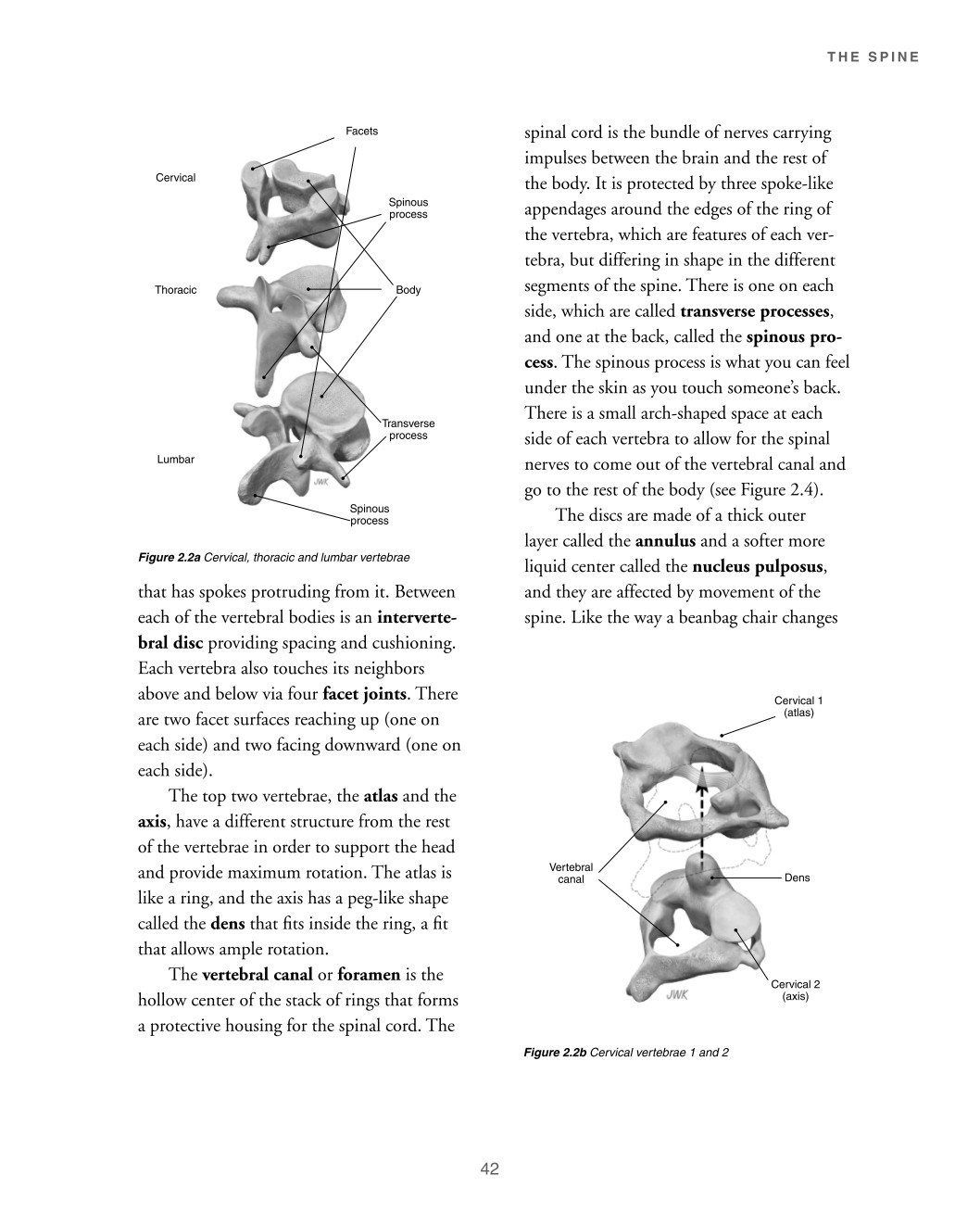

THE SPINE
Facets Cervical Spinous process Thoracic Body Transverse process Lumbar Spinous process Figure 2.2a Cervical, thoracic and lumbar vertebrae that has spokes protruding from it. Between each of the vertebral bodies is an interverte- bral disc providing spacing and cushioning. Each vertebra also touches its neighbors above and below via four facet joints. There are two facet surfaces reaching up (one on each side) and two facing downward (one on each side). The top two vertebrae, the atlas and the axis, have a different structure from the rest of the vertebrae in order to support the head and provide maximum rotation. The atlas is like a ring, and the axis has a peg-like shape called the dens that fits inside the ring, a fit that allows ample rotation. The vertebral canal or foramen is the hollow center of the stack of rings that forms a protective housing for the spinal cord. The Figure 2.2b Cervical vertebrae 1 and 2 Vertebral canal Dens spinal cord is the bundle of nerves carrying impulses between the brain and the rest of the body. It is protected by three spoke-like appendages around the edges of the ring of the vertebra, which are features of each ver- tebra, but differing in shape in the different segments of the spine. There is one on each side, which are called transverse processes, and one at the back, called the spinous pro- cess. The spinous process is what you can feel under the skin as you touch someone’s back. There is a small arch-shaped space at each side of each vertebra to allow for the spinal nerves to come out of the vertebral canal and go to the rest of the body (see Figure 2.4). The discs are made of a thick outer layer called the annulus and a softer more liquid center called the nucleus pulposus, and they are affected by movement of the spine. Like the way a beanbag chair changes Cervical 1 (atlas)
Cervical 2 (axis)
42